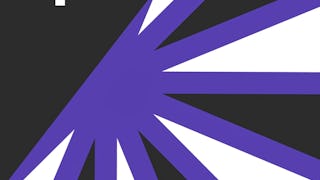In Introduction to Web Applications, you’ll learn about HyperText Markup Language (HTML), the fundamental language of the web. You’ll gain foundational knowledge of the ground rules for creating compliant HTML tags and learn to create engaging web pages.


Introduction to Web Applications
This course is part of Akamai Customer Consulting and Support Professional Certificate

Instructor: Shadow Farrell
Top Instructor
2,238 already enrolled
Included with
(25 reviews)
Recommended experience
What you'll learn
Learners will master basic HTML coding (HTML5) and basic and advanced skills in Cascading Style Sheets (CSS3).
Skills you'll gain
Details to know

Add to your LinkedIn profile
23 assignments
See how employees at top companies are mastering in-demand skills

Build your Support and Operations expertise
- Learn new concepts from industry experts
- Gain a foundational understanding of a subject or tool
- Develop job-relevant skills with hands-on projects
- Earn a shareable career certificate from Akamai Technologies, Inc.

There are 8 modules in this course
In this module, you will learn about markup languages in general and HTML in particular. You will learn which tools are appropriate for creating HTML code. After that, you will learn about some of the elements that must be present on an HTML page and some elements used for organizing HTML pages. In the last lesson, you will be introduced to elements that can control how text looks on the screen.
What's included
13 videos6 readings4 assignments
In this module, you will learn how to embed content in HTML web pages and create hyperlinks. You will also learn how to create and format tables , image maps and forms.
What's included
14 videos3 readings4 assignments1 discussion prompt
In this module, you will learn how to work with styles including the differences between inline, embedded stylesheets and linked stylesheets and how they cascade. You will learn to create style rules, control text and page elements, manage block and inline elements and use the aside element and the float property.
What's included
11 videos3 readings4 assignments1 discussion prompt
In this module, you will learn how to work with styles including the differences between inline, embedded stylesheets and linked stylesheets and how they cascade. You will learn to create style rules, control text and page elements, manage block and inline elements and use the aside element and the float property.
What's included
4 videos5 readings3 assignments
In this module, you will learn quite a number of ways to identify items for formatting with CSS including attribute , pseudo-class , structural element and pseudo-element selectors. Then you will learn about responsive web design. You will gain a deeper understanding of the box model layout, and learn how to provide alternative layouts including newspaper columns and flexible box layouts.
What's included
6 videos9 readings3 assignments
In this module, you will learn how to use advanced techniques to create backgrounds including using background images, changing the opacity of objects, and creating gradients. You will also learn how to use images for borders, create rounded corners on boxes, and add shadows to boxes and text.
What's included
1 video9 readings3 assignments1 discussion prompt
In this module you will learn how to transform objects in HTML and learn to add animation using transitions and keyframe animation.
What's included
2 videos5 readings2 assignments
In this module you will learn how to transform objects in HTML and learn to add animation using transitions and keyframe animation.
What's included
2 videos1 peer review
Earn a career certificate
Add this credential to your LinkedIn profile, resume, or CV. Share it on social media and in your performance review.
Instructor

Offered by
Explore more from Support and Operations
 Status: Free Trial
Status: Free Trial Status: Free Trial
Status: Free Trial Status: Free Trial
Status: Free Trial
University of New Mexico
Why people choose Coursera for their career





Open new doors with Coursera Plus
Unlimited access to 10,000+ world-class courses, hands-on projects, and job-ready certificate programs - all included in your subscription
Advance your career with an online degree
Earn a degree from world-class universities - 100% online
Join over 3,400 global companies that choose Coursera for Business
Upskill your employees to excel in the digital economy
Frequently asked questions
To access the course materials, assignments and to earn a Certificate, you will need to purchase the Certificate experience when you enroll in a course. You can try a Free Trial instead, or apply for Financial Aid. The course may offer 'Full Course, No Certificate' instead. This option lets you see all course materials, submit required assessments, and get a final grade. This also means that you will not be able to purchase a Certificate experience.
When you enroll in the course, you get access to all of the courses in the Certificate, and you earn a certificate when you complete the work. Your electronic Certificate will be added to your Accomplishments page - from there, you can print your Certificate or add it to your LinkedIn profile.
More questions
Financial aid available,

